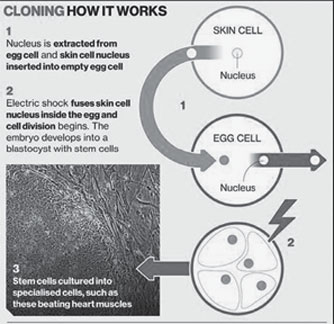|

Suicide, no answer to life’s problems
By Carol Aloysius
While deaths from suicide rates may have declined from their peak
period in the mid 90s, but these needless and preventable deaths
nevertheless still remain a subject that continues to worry health
personnel, sociologists and the public at large.
The health authorities and the Government first began taking serious
note of Sri Lanka’s rising suicide rates, when they reached a high in
1995, with the percentage of suicides in the country averaging 47.5 per
100,000 population, giving our little island the dubious distinction of
having the highest suicides in the world.
 Interventions that followed which included import controls of highly
toxic pesticides, one of the main agents used for suicides in rural
areas due to their ready availability, and improved management of
poisoning cases, resulted in the decline in these self induced deaths.
Yet, new studies show that once more the figure have begun to climb,
with most victims young adults being in the prime of their lives. Interventions that followed which included import controls of highly
toxic pesticides, one of the main agents used for suicides in rural
areas due to their ready availability, and improved management of
poisoning cases, resulted in the decline in these self induced deaths.
Yet, new studies show that once more the figure have begun to climb,
with most victims young adults being in the prime of their lives.
One of the most terrifying ways to end one’s life is perhaps by
setting one’s body on fire and transforming oneself into a human torch.
Those who have failed to end their lives this way end up with scars
that last a life time and emotional and physical trauma.
Although this phenomenon is gaining ground in some other countries,
self immolation is also fairly common in certain parts of this island,
says Senior Professor of forensic Medicine and Toxicology of the Faculty
of Medicine of University of Colombo and former head of the Poisons Unit
of General Hospital Dr Ravindra Fernando. He came to this conclusion
after doing a study on self immolation in Sri Lanka, part of a series of
studies on suicides which he and some colleagues conducted on over two
thousand suicide related inquests at the Coroner’s court in Colombo a
few years ago.
He recently shared some of the findings of this study with the Sunday
Observer.
Excerpts…
Question: Suicide, as a growing form of violent death has
serious impacts on the family, community and society as a whole. Your
comments?
Answer: Suicide is considered a complex act that has
biological, psychological and social implications and several underlying
causes. It is a tragic but preventable global public health problem,
causing almost half of all violent deaths. It is estimated that
worldwide suicide was the most frequent form of violent death followed
by homicide and then war related deaths.
The pain, suffering and socio-economic costs of this problem is
significant. Economic costs of suicide are in billions of dollars.
Family and friends of suicide victims are devastated emotionally,
socially and sometimes even economically.
Q. How is a verdict of suicide given?
A. All suicides have to be reported to the Inquirer of Sudden
Death (ISD) or ‘Coroner’, for an inquest according to the Criminal
Procedure Code of Sri Lanka. At an inquest, the police present evidence
relating to the death. Close family members, friends or eye witnesses to
an incident such as consuming a poison, give evidence.
The ISD obtains the cause of death from doctors, and sometimes after
an autopsy examination. Having considered all these, the ISD pronounces
the verdict of suicide.
Q. What was the main focus of your study?
A. We studied all forms of suicide, the causes and impacts.
Q. What prompted the study?
A. We were concerned that although the suicide rates had
declined compared to the mid nineties, there was still a significant
number of deaths where the verdict was suicide. Our objective was to
analyse the underlying cause of such deaths, and find ways to prevent
them.
Q. What were your findings with regard to methods: as well as
the age/sex distribution of the victims?
A. The suicides of 151, persons i.e. 93 men and 58 women were
documented at the Coroner’s Court. We found that 44 percent of the
deaths were from self poisoning which was the commonest form, while 34
percent were due to self immolation. The age/sex distribution of the
latter group showed a predominance of females (76 percent The level of
education showed that 45 percent had school education up to grade 6 –
11. Sixty-three percent of victims were married, twenty percent single,
five percent widowed, two percent separated and six percent living
together. We also found that 71 percent cases of self immolation took
place inside their own residence.
Q. Had any of them attempted suicide before?
A. The inquest showed that four victims had attempted suicide
earlier.
Q. By what method?
A. Self poisoning, cut injuries, attempted drowning and self
immolation.
Q. What were the reasons for wanting to end their lives?
A. The commonest reason for suicide was dispute with the
spouse/marital disharmony (45 percent). The other main reasons were
dispute with parents (10 percent), financial matters (6 percent),
psychiatric illnesses (4 percent), unemployment (4 percent) disputes in
love affairs (4 percent) and organic diseases (4 percent).
The present study showed a female to male ratio of 3.25:1. Police
statistics showed that self immolation was the third commonest method
used by females after poisoning and hanging.
Q. So what were the reasons for them wanting to end their
lives?
A. The commonest reason for suicide was dispute with the
spouse/marital disharmony (45 percent). Other main reasons were dispute
with parents (10 percent), financial matters (6 percent), psychiatric
illnesses (4 percent), unemployment (4 percent) disputes in love affairs
(4 percent) and organic diseases (4 percent).
Q. Since self immolation was part of this series, how did you
get about the task of doing this particular study?
A. We studied all deaths from burns where a verdict of suicide
was given after an inquest at the Coroner’s Court, Colombo. The study
was conducted over a period of one year.
Q. Had any of them attempted suicide before?
A. Yes. A few.
Q. By what method?
A. Self poisoning, cut injuries, attempted drowning and self
immolation. The present study showed a female to male ratio of 3.25:1.
Police statistics showed that self immolation was the third commonest
method used by females after poisoning and hanging.
Q. Why did they choose this method?
A. One reason that self-immolation as a method to commit
suicide is common among Sri Lankan females, is because of the easy
availability of kerosene in kitchens of households of low socioeconomic
groups, where it is used for cooking and sometimes even lighting. This
is typical in Asiatic countries where firewood and kerosene is still
used for cooking. For someone bent on committing suicide, all it takes
is to pour kerosene over one’s body and set it alight with a single
match stick! In the West where you don’t find kerosene most self induced
burns are largely from electric domestic appliances - or by dousing
oneself with petrol and setting fire to yourself.
Q. Since the ultimate objective of your study was to prevent
suicide in any form, what interventions do you suggest?
A. As I said earlier, self harm is considered a symptom of a
range of mental illnesses and predicaments. Hence early detection and
treatment of mental illness in the population is a must if only because
it might ultimately save the high cost of management of self harm,
especially self poisoning in addition to self immolation.
Preventing suicide however requires a multidisciplinary approach and
significant medical, psychological, occupational and social support.
Increased awareness and education of the vulnerable individuals such
as young adults with personal problems, counselling and befriending
elderly persons who are lonely and depressed, improved parent - child
relationships and bridging communication gaps so that young adults can
confide in their parents of personal problems and sort them out in an
amicable manner can prevent people from taking this drastic step of
ending their lies prematurely.
As alcohol dependence has also been identified as a risk factor for
suicides, prevention of alcohol abuse is an essential element in any
suicide prevention program.
Empowering people to manage anger and conflicts, recognising and
treating psychiatric illnesses will also go a long way in preventing
suicides.
The fishy origins of our hips
New research has revealed that the evolution of the complex,
weight-bearing hips of walking animals from the basic hips of fish was a
much simpler process than previously thought.
Tetrapods, or four-legged animals, first stepped onto land about 395
million years ago. This significant change was made possible by strong
hipbones and a connection through the spine via an ilium - features that
were not present in the fish ancestors of tetrapods.
 In a study published in the journal *Evolution and Development,* Dr
Catherine Boisvert of the Australian Regenerative Medicine Institute at
Monash University, MacQuarie University's Professor Jean Joss and
Professor Per Ahlberg of Uppsala University examined the hip structures
of some of human's closest fish cousins. In a study published in the journal *Evolution and Development,* Dr
Catherine Boisvert of the Australian Regenerative Medicine Institute at
Monash University, MacQuarie University's Professor Jean Joss and
Professor Per Ahlberg of Uppsala University examined the hip structures
of some of human's closest fish cousins.
They found the differences between us and them are not as great as
they appear - most of the key elements necessary for the transformation
to human hips were actually already present in our fish ancestors.
Dr Boisvert and her collaborators compared the hip development -
bones and musculature - of the Australian lung fish and the Axolotl,
commonly known as the Mexican Walking Fish.
The results showed that, surprisingly, the transition from simple
fish hip to complex weight-bearing hip could be done in a few
evolutionary steps. “Many of the muscles thought to be “new” in
tetrapods evolved from muscles already present in lungfish. We also
found evidence of a new, more simple path by which skeletal structures
would have evolved,” Dr Boisvert said.
The researchers found that the sitting bones would have evolved by
the extension of the already existing pubis. The connection to the
vertebral column could have evolved from an illiac process already
present in fish.
“The transition from ocean-dwelling to land-dwelling animals was a
major event in the evolution of terrestrial animals, including humans,
and an altered hip was an essential enabling step,” Dr Boisvert said.
“Our research shows that what initially appeared to be a large change
in morphology could be done with relatively few developmental steps.”
- MNT
Human cloning breakthrough raises hopes to treat Parkinson's and
heart disease
News could lead to tissue-transplant operations for range of
debilitating disorders, also including MS and spinal cord injuries
Scientists have finally made the long-awaited breakthrough in human
cloning by turning skin cells into early-stage embryos that were then
used to create specialised tissue cells for transplant operations, it
has been revealed.
 For the first time, researchers have unequivocally created human
embryonic stem cells using the cloning technique that led to the birth
of Dolly the sheep. However, unlike Dolly, the human embryos were
destroyed when their stem cells were extracted. The scientific
milestone, which comes 17 years after the birth of Dolly, represents a
major turning point in human cloning research which could now lead to
new tissue-transplant operations for a range of debilitating disorders,
such as Parkinson's disease, multiple sclerosis, heart disease and
spinal cord injuries. For the first time, researchers have unequivocally created human
embryonic stem cells using the cloning technique that led to the birth
of Dolly the sheep. However, unlike Dolly, the human embryos were
destroyed when their stem cells were extracted. The scientific
milestone, which comes 17 years after the birth of Dolly, represents a
major turning point in human cloning research which could now lead to
new tissue-transplant operations for a range of debilitating disorders,
such as Parkinson's disease, multiple sclerosis, heart disease and
spinal cord injuries.
However, the breakthrough will also raise serious ethical concerns
about the creation of human embryos for medical purposes and the
possible use of the same technique to produce IVF embryos for couples
wanting their own cloned babies - which is currently illegal in the UK.
The scientists who made the advance emphasised that the work is
designed to produce replacement tissue for transplant operations from a
patient's own skin cells, rather than to improve the chances of
so-called “reproductive cloning”. However, other scientists said the
achievement inevitably brings the prospect of cloned babies a step
nearer.
Generating a plentiful supply of embryonic stem cells from a
patient's own skin cells has been one of the holy grails of medical
science. Although the procedure has been achieved in laboratory animals
- such as mice and monkeys - it has until now alluded several attempts
on human material.
Shoukhrat Mitalipov, who led the research team at the Oregon Health
and Science University in Portland, said that he added caffeine to his
cell cultures to create viable embryonic stem cells from just a small
number of human eggs.
“It was thought that to make [it] work many thousands of human eggs
would be needed. We were able to produce one embryonic stem cell line
using just two human eggs which would make this approach practical for
widespread therapeutic use,” Dr Mitalipov said.
“Our finding offers new ways of generating stem cells for patients
with dysfunctional or damaged tissues or organs. Such stem cells can
regenerate and replace those damaged cells and tissues and alleviate
diseases that affect millions of people,” he said.
In 2004, scientists led by the disgraced Woo Suk Hwang of Seoul
National University claimed to have produced the first cloned human
embryos, and later said they had extracted embryonic stem cells, but
they were forced to retract the research after a scandal over fraudulent
results and unethical practices. Other researchers also claimed to have
produced cloned human embryos but none had been able to show
definitively that they could generate plentiful supplies of embryonic
stem cells that could be converted in the laboratory into fully
specialised tissue cells, such as beating heart muscle.
Dr Mitalipov made important technical advances that enabled the
cloned human embryos to survive to the 150-cell stage, known as a
blastocyst, when embryonic stem cells can be extracted for growing in
the laboratory into specialised tissue cells, such as nerve cells or
cardiac muscle.
“A thorough examination of the stem cells derived through this
technique demonstrated their ability to convert just like normal
embryonic stem cells, into several different cell types, including nerve
cells, liver cells and heart cells,” Dr Mitalipov said.
“Furthermore, because these reprogrammed cells can be generated with
nuclear genetic material from a patient, there is no concern of
transplant rejection. While there is much work to be done in developing
safe and effective stem-cell treatments, we believe this is a
significant step forward in developing cells that could be used in
regenerative medicine,” he said.
The research was directly aimed at generating embryonic stem cells
for treating serious disorders from a patient's skin cells, and not at
improving the chances of producing cloned babies, Dr Mitalipov said.
“This is not our focus, nor do we believe our findings might be used by
others to advance the possibility of human reproductive cloning,” he
said.. However, David King director of the pressure group Human Genetics
Alert, said: “Scientists have finally delivered the baby that would-be
human cloners have been waiting for: a method for reliably creating
cloned human embryos.
This makes it imperative that we create an international legal ban on
human cloning before any more research like this takes place. It is
irresponsible in the extreme to have published this research.”
Paul de Sousa of Edinburgh University said the breakthrough means a
technique that was once considered impractical could now be used to
generate plentiful supplies of human embryonic stem cells for future
transplant operations.“They have shown it to be a very efficient
procedure based on a relatively small number of eggs. It indicates that
the procedure is clinically transferable. It's an important step,” Dr de
Sousa said. Professor Mary Herbert of Newcastle University, said:
“Provided that the experiments are reproducible in the hands of others,
the findings offer the potential to accelerate progress towards the
development of patient-specific embryonic stem cells to treat a range of
degenerative diseases.”
- The Independent
Job stress, unhealthy lifestyle increase risk of coronary artery
disease
People with job stress and an unhealthy lifestyle are at higher risk
of coronary artery disease than people who have job stress but lead
healthy lifestyles, found a study published in CMAJ (Canadian Medical
Association Journal).
 To determine whether a healthy lifestyle can help reduce the effects
of job stress on coronary artery disease, researchers looked at 7 cohort
studies from a large European initiative that included 102 128 people
who were disease-free during the 15-year study period (1985-2000).
Participants, ranging in age from 17-70 (mean 44.3) years were from the
United Kingdom, France, Belgium, Sweden and Finland. More than half (52
percent) were women. To determine whether a healthy lifestyle can help reduce the effects
of job stress on coronary artery disease, researchers looked at 7 cohort
studies from a large European initiative that included 102 128 people
who were disease-free during the 15-year study period (1985-2000).
Participants, ranging in age from 17-70 (mean 44.3) years were from the
United Kingdom, France, Belgium, Sweden and Finland. More than half (52
percent) were women.
Of the total participants, 15 986 (16 percent) reported job stress,
which was determined from specific job-related questions in the studies.
The investigators defined three lifestyle categories based on smoking,
alcohol consumption, physical activity/inactivity and obesity (body mass
index). A “healthy lifestyle” had no lifestyle risk factors, “moderately
unhealthy lifestyle” had one risk factor and “unhealthy lifestyle”
included 2-4 lifestyle risk factors.
A total of 1,086 participants had incident events of coronary artery
disease events during the follow-up period. The 10-year incidence of
coronary artery disease was 18.4 per 1000 people for people with job
strain and 14.7
for those without job strain. People with an unhealthy lifestyle had
a significantly higher 10-year incidence rate (30.6 per 1000) compared
to those with a healthy lifestyle (12.0 per 1000). The incidence rate
was 31.2 per 1000 for participants with job strain and an unhealthy
lifestyle but only 14.7 for those with job strain and a healthy
lifestyle. “The risk of coronary artery disease was highest among
participants who reported job strain and an unhealthy lifestyle; those
with job strain and a healthy lifestyle had about half the rate of
thisdisease,” writes Dr. Mika Kivimäki, Department of Epidemiology and
Public Health, University College London (UCL), London, United Kingdom.
“These observational data suggest that a healthy lifestyle could
substantially reduce the risk of coronary artery disease risk among
people with job strain.”
- MNT
|


